A Call for Change: Industry Wide Cryonics Emergency Bracelets
Disaster Strikes a Young Cryonicist
On August 6th, 2024, around 3:30pm Pacific Time, Kerrigan Madden was struck by a truck and flung approximately eight meters while crossing the street. Several people—including a volunteer police officer—witnessed the accident and immediately contacted emergency medical services. Paramedics quickly arrived on the scene and immediately noticed his bracelet but didn’t check his necklace or wallet card. Kerrigan asked the volunteer officer who initially came to his aid to call the Cryonics Institute (CI). Since the bracelet was covered in Kerrigan’s blood and the phone number was engraved in small red font, the volunteer informed Kerrigan that it was illegible.
Next, Kerrigan tried to phone me, but I was regrettably unable to answer. Despite suffering numerous injuries, including a broken nose and concussion , Kerrigan still had the presence of mind to show the volunteer his necklace listing CI’s phone numbers after I didn’t answer his call.
A volunteer police officer on the scene phoned the Cryonics Institute and Kerrigan believes he heard the party who answered the phone say “Cryonics Institute” over the speaker before the call abruptly dropped.
I didn’t learn of the accident until the following day, although I did feel something was amiss because I don’t normally receive phone calls from anyone of my generation. When I followed up with Kerrigan the day after his accident, I was surprised to hear that he’d been hospitalized.
Thoughts and Follow-up
In the past, I had made light of cryonicists who wore both the necklace and the bracelet because I found both at once excessive. In this case, however, having both was truly useful. I noticed the small font phone on the bracelet makes it hard to read. First responders may not see the necklace since it’s usually worn underneath a shirt, whereas they’ll probably see the medical bracelet when checking for a pulse. Plus, first responders have a procedure to look out for medical bracelets but not for medical necklaces, so cryonicists should prioritize the bracelet over the necklace. In this unfortunate situation, all emergency mechanisms failed since first responders were unable to speak to someone at the Cryonics Institute. No representative from CI followed up with Kerrigan in the days that followed the accident.
With Kerrigan’s permission, I phoned CI on August 12th to see what happened and reached Andy Zawacki. He was surprised by my story and said there was a 24/7 emergency call center that should have answered for Kerrigan. Andy ended the call with a promise to follow up with Kerrigan directly. Police body cam footage was released on August 21st and confirmed that the volunteer police officer had likely reached the Cryonics Institute. The volunteer said “he asked me to phone the cryogenics company.” There is footage of Kerrigan speaking to a representative at Cryonics Institute before he was pressured to drop the call by paramedics who wanted to take him into the ambulance.
Last year, Brady Bedward—a young cryonicist who recently became a registered EMT —convinced Kerrigan to acquire and wear an emergency bracelet. Brady mentioned that first responders are more likely to find a medical alert bracelet than a necklace. Before meeting Brady, he had only worn his necklace.
Ben Best—an early pioneer of cryonics—has stated that his necklace went unnoticed by EMS during his stroke in 2023. Ben also complained of discomfort caused by the bracelets provided by both the Cryonics Institute and Alcor, and other cryonicists have voiced similar complaints. My bracelet from Alcor is far too large for me, so I ordered a small medical bracelet which I planned to engrave. However, it ended up languishing in a drawer for the past five years. I have attended numerous cryonics events and the majority of cryonicists I see do not wear their bracelets or necklaces . Sayer Johanson—an EMT with over 80 cryonics cases under his belt as COO of Suspended Animation—also confirmed that the bracelet was more effective as emergency wear than the necklace.
Figures 1 & 2: The Alcor bracelet does not come close to fitting my wrist. Next to it is a bracelet I purchased to customize with an engraving of the Alcor emergency number.
“Dr. Robert Femia, the chair of emergency medicine at NYU Langone Health, said he and his colleagues rely on medical bracelets every day in the emergency room.”
— Jaclyn Peiser, The New York Times1
“This is why I advise people that the original, basic MedicAlert bracelets are still the best,” Cunningham says. “They are relatively easy to see, and EMS personnel are accustomed to recognizing them.”
— Dr. Carol Cunningham, MD, FAAEM, FAEMS, Medical Director, Ohio Department of Public Safety Division of Emergency Medical Services2
Recommendations for the Cryonics Industry
Make the medical bracelet the primary form of cryonics emergency wearable and consider the necklace as a backup measure. The necklace can be used for social signaling, but we cannot assume that EMTs or paramedics will see it in a true emergency.
Make the medical bracelet more comfortable while still being recognizable as a medical alert wearable. There are online companies that create comfortable custom medical alert wearables, such as StickyJ3. However, there is a fine line between form and function; the more stylish designs aren’t as easily recognized as being medical alert bracelets.4 The most recognizable medical alert bracelets typically include universal medical symbols, such as the Red Cross or Star of Life, and often feature a large stainless steel rectangular area for text.
Shorten the text on the bracelet and make the phone number larger. The Cryonics Institute’s necklace and bracelet includes four phone numbers; Kerrigan suggested that they reduce it to two.
Include the medical bracelet automatically with all full cryopreservation memberships. All fully registered cryonicists should be provided with a bracelet that comfortably fits their wrist as part of their membership fees.
Encourage all members to wear their medical emergency bracelets. Ideally, cryonicists should wear a necklace and bracelet, as well as carry a wallet card. Kerrigan is only 29 years old, but his life could have ended in an instant.
Image Library and Commentary
Figures 3 to 8: The Cryonics Institute’s necklace and bracelet currently have up to four phone numbers engraved in such a way that a first responder may struggle to read them. The wallet cards are clear however still offer too many different numbers to phone.
Figures 9 to 12: Alcor’s engraving is also difficult to read, but only two emergency numbers are listed, which may be more practical. The wallet card is clear and easy to read.
Figure 13 to 14: The first model of the Tomorrow Biostasis necklace is shown. I notice the font is in high contrast with the background and it includes a single phone number, which is good. However, I consider the number display suboptimal since it is in one large block; it could be spaced out as +49 306 293 8537. At the very least, the +49 country code should be separated. Tomorrow Biostasis’ wallet card does not have any symbols showing it is a medical alert. The text on the wallet card is in a small font.
Figure 15: The first design of the Tomorrow Biostasis bracelet next to an Apple Watch face. The font on Tomorrow’s bracelet is tiny. It appears to be font size 7 and the wristband is not very adjustable.
Figure 16 & 17: The second and third iteration of the Tomorrow Biostasis bracelet, the font size is increased and the wristband size is more adjustable. There is significant improvement in their second and third iterations. The phone number country code was separated in these newer versions.
Acknowledgements
I would like to thank Kerrigan Madden for allowing me to share his story and for his input during the writing process. I would also like to thank Lauren Fosco and Jacob Cook for helping me edit my article.
References
Peiser, J. (2020, March 23). The Medical ID Bracelet That Doesn’t Look Like One. The New York Times.
https://www.nytimes.com/2020/03/23/style/medical-id-health-coronavirus.htmlCareless, J. (2018, October 1). Does the Public Expect Too Much From Medical-Alert Technology? HMP Global Learning Network. https://www.hmpgloballearningnetwork.com/site/emsworld/article/221360/does- public-expect-too-much-medical-alert-technology
https://www.stickyj.com/category/medical-alert-bracelets/
Haagaard, A. M. (2013). (thesis). Paramedic-Focused Recommendations for the Design of a Medical Identification System. OCAD University, Toronto.
https://openresearch.ocadu.ca/id/eprint/75/1/ahaagaard_thesis_compiled_v8.pdf


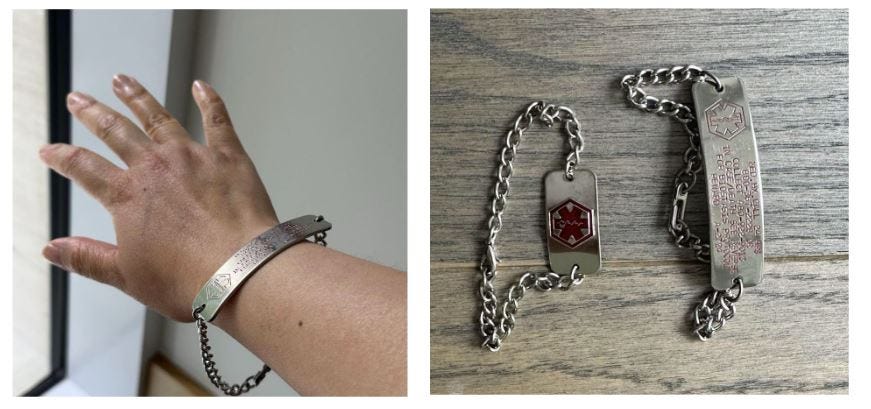

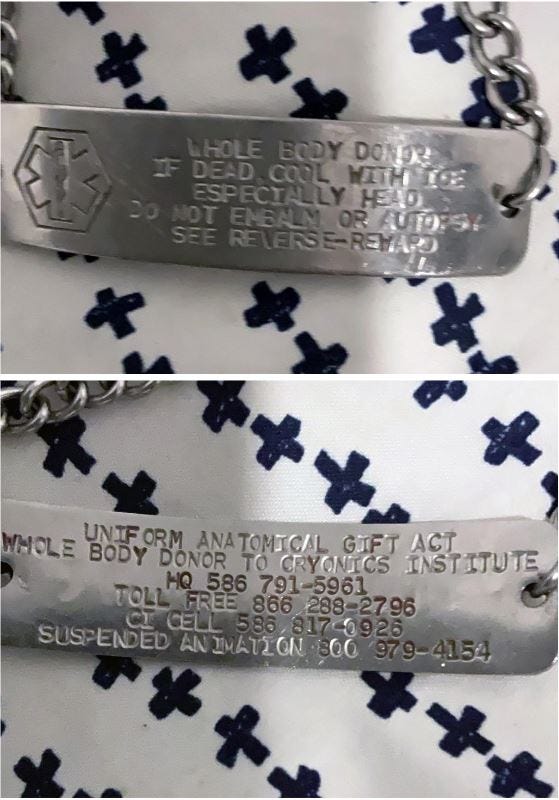
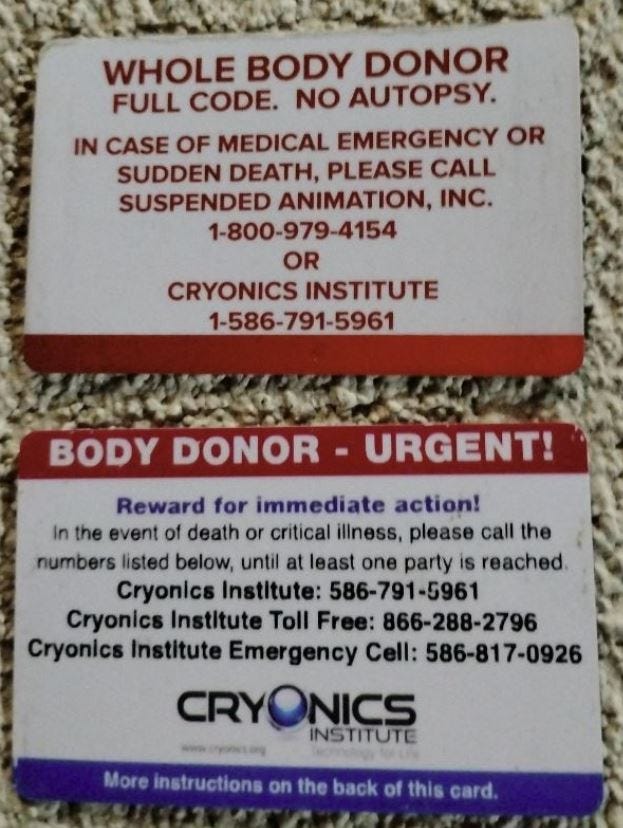
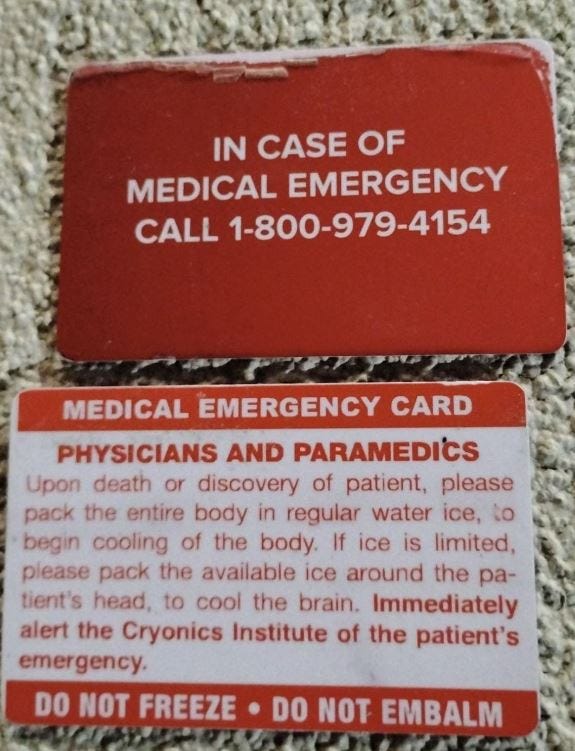

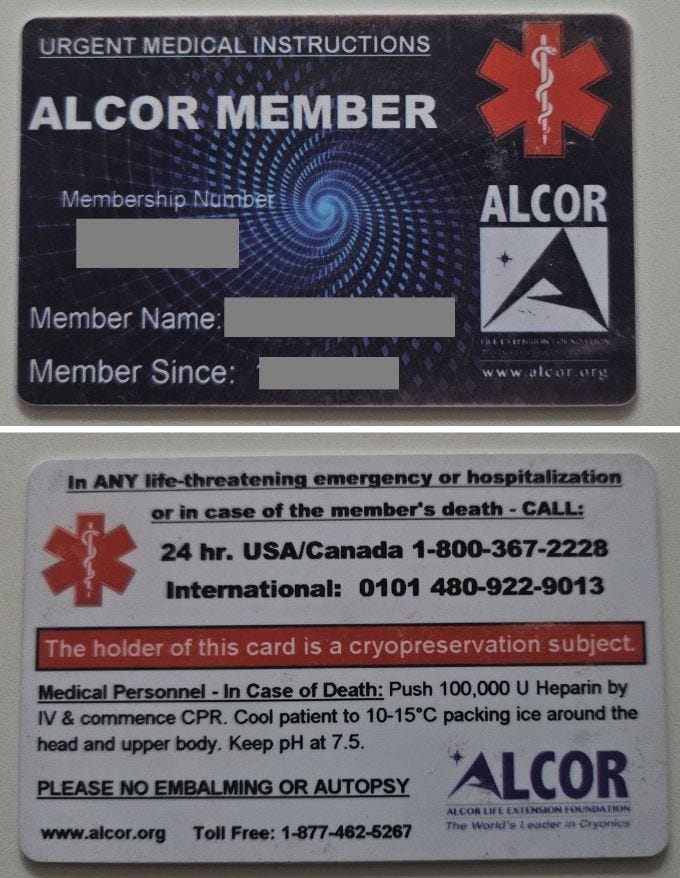


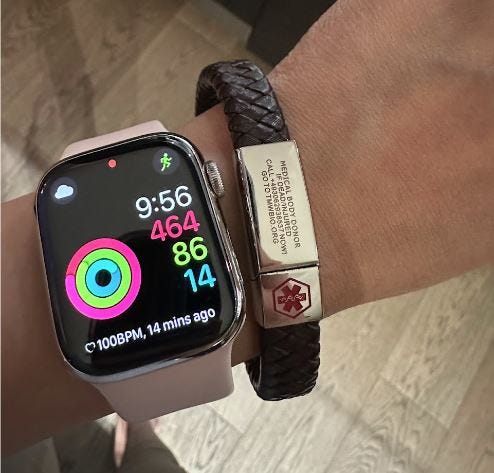
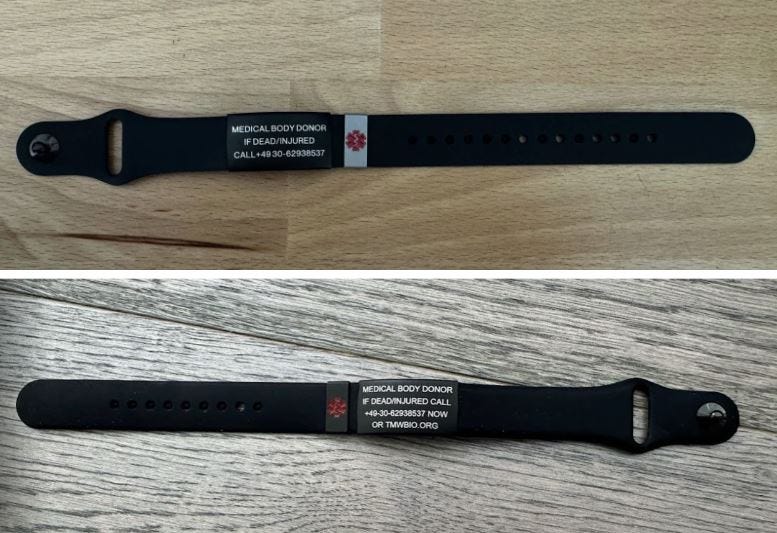

In my experience, as a former Alcor member and former standby team leader who has known dozens of cryonicists, many people acquire a psychological feeling of completion when they sign all the documents and don a medalert bracelet. The feeling is like, "I have now taken care of mortality."
Carrie's story is a painful but welcome reminder that this is not realistic. Countless errors and omissions may still degrade your chances of a good cryopreservation, or any cryopreservation at all. And you can never take too many precautions.
To take one example: Many times, when writing texts for cryonics organizations, I have advised members to take steps such as contacting a local funeral director and/or local medical examiner, to establish an understanding regarding cryonics arrangements. Yet I would guess maybe 1% of cryonicists have actually taken this step.
Another, simpler but important, step is to make a video of yourself explaining your rational and fully informed desire for cryopreservation. You may feel this is unnecessary, because your relatives and friends all know and respect your choice. But many times I have seen relatives, in particular, undergo a very dramatic, radical, and sudden shift in values when someone's death occurs. Compassion evaporates. Self-interest emerges. A video is the best possible defense in any dispute where your preferences may be challenged, and you are not able to speak for yourself anymore.
We used to record video statements for people at cryonics events, "back in the day." I wonder if this still happens.
A compelling article by Carrie Radomski for a CLEARLY READABLE COMFORTABLE CRYONICS BRACELET! I personally found the Alcor bracelet so annoying that I now wear a VERY CLEAR bracelet from Sticky Jewelry with the Alcor information transcribed. I recommend EVERY cryonicist spend 25 bucks and get a decent, CLEARLY LABELED bracelet from Sticky Jewelry. Since we can't count on Cryonics orgs to move fast on this, YOU need to take a simple and affordable action.